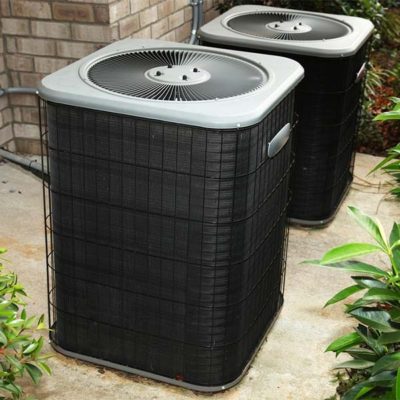The condenser unit is one of the most important pieces of equipment in residential AC systems.
All split-system AC systems have an indoor unit and an outdoor unit. The condenser unit is the outdoor unit. While it may look like nothing more than a large metal box, it contains several key parts.
What are the different parts of a condenser unit exactly?
Coil
There’s a coil inside of condenser units. Know as the condenser coil, it acts like a heat exchanger.
As hot refrigerant is forced through the condenser coil, heat will be released. And because the condenser coil – as well as the entire condenser unit – is located outdoors, the heat will escape your homes.
Compressor
Condenser units contain a compressor as well.
The compressor is often referred to as the heart of the condenser unit. Without it, the condenser unit won’t be able to perform its function by removing heat from the refrigerant.
The compressor is a device that’s designed to compress refrigerant.
Before entering the condenser coil, refrigerant must go through the compressor. The compressor will force the refrigerant molecules closer together, essentially pressurizing them. This process makes the refrigerant hotter so that it can release more heat.
Blower
Another part of a condenser unit is the blower. The blower is essentially an electrical motor.
When running your home’s AC system, it will spin so that heat can be released from the refrigerant. If the blower fails, the refrigerant may remain hot. The condenser coil won’t be able to release heat from it, resulting in the hot refrigerant going back into your home.
Fan
The blower works in conjunction with a fan. All condenser units have a fan, which is typically connected to a blower.
As the blower spins, so will the blades on the fan to which it’s connected. The fan will then move air over the condenser unit. You can typically see and hear the fan inside of the condenser unit when it’s running.
Expansion Valve
A lesser-known part of condenser units is the expansion valve.
This small device is designed to regulate how much refrigerant travels to the condenser unit. Refrigerant, of course, follows a closed path that starts at the evaporator coil and ends at the condenser coil, after which it performs the same path during another cycle.
The expansion valve regulates the flow of refrigerant by removing excess pressure from it.
If you are experiencing a problem with your air conditioning or heating call us at 512-336-1431 to schedule an appointment. We’ll be glad to come out and take a look at the issue.
1431-183 A/C & Heating proudly serves Round Rock, Georgetown, Cedar Park, Pflugerville, Leander, Liberty Hill, and North Austin.

